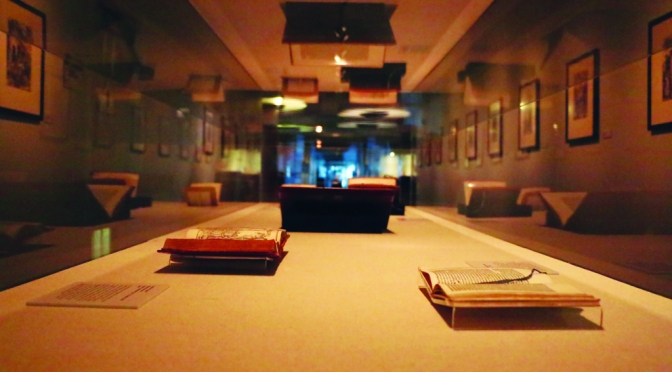
On Thursday, Feb. 2, USF faculty, students, and community members gathered to celebrate the opening reception of “Richard Kamler: A Retrospective” at the Thacher Gallery. This haunting exhibit features the work of the USF Department of Art + Architecture professor Richard Kamler, who retired last year.
The exhibit boasts a large collection of Kamler’s sketchbook drawings, paintings, objects, and photos of his installations focusing on social and political activism. As resident artist of the San Quentin Prison in the 1980’s, many of Kamler’s pieces explore the problems within the California criminal justice system. Kamler’s work brings attention to the pressing issues that the public often chooses to ignore.
“Richard is a pioneer in socially engaged art. This exhibit really engages the school’s mission and values,” said Fr. Thomas Lucas, director of the Thacher Gallery. “This is not an easy show. It challenges preconceptions and makes us reflect on the hard issues of our world and within our local political scene.”
Among the many pieces on display, Kamler’s work “Table of Voices” (1994-1996) was one that packed a powerful emotional punch. In the middle of the gallery, “Table of Voices” is a two-sided table separated by a glass panel; one side made of lead, the other side covered in gold leaf. Attached to both sides of the table are telephones that play the voices of the perpetrators on one side, and the voices of the victim’s families on the other side in real time.
“It was an effort to bring together both the perpetrators and the parents of the murdered children,” explained Kamler. “I chose to use lead and gold as a reference to alchemy, the way lead can transform into gold.”
For art appreciation professor Mary Mattlage the show, and particularly “Table of Voices”, had a “powerful impact” on her. “I’m interested in the way Richard uses materials like lead and gold leaf to give a sense of a physical experience. He brings humanity to the prisoners through his images and recorded dialogues,” said Mattlage.
Other works such as “The Waiting Room” (1999-2001) further explore Kamler’s concentration on the prison system. “The Waiting Room” is an installation piece featuring a small prison cell and a swinging pendulum projected onto the wall. Within the cell is a lead sculpture of the prisoners’ last meals on a cart. The headphones attached to the cell play the haunting drone of a pendulum.
“The piece is about the death penalty,” said Kamler. “The pendulum swings continuously, and every so often a heat beat will sound for about 2-3 minutes. It goes on and off until it stutters and stops.”
These kinds of works are meant to provoke the viewer to rethink important political and social issues regarding legal reform of the prison system. Kamler’s politically charged art has drawn attention on both the national and international scale.
“I am most impressed to see Richard Kamler’s work used as a catalyst for social change. That’s exactly what our students learn here. Art is not a neutral entity. It can have a positive impact,” said USF president Fr. Stephen Privette.
“I draw inspiration from the world,” said Kamler. “Art is about engagement. I look around at the world and I see how art can play a role in social change.”
Check out “Richard Kamler: A Retrospective” at the Thacher Gallery at the USF Gleeson Library, on display until Mar. 4.
http://www.richardkamler.org.


